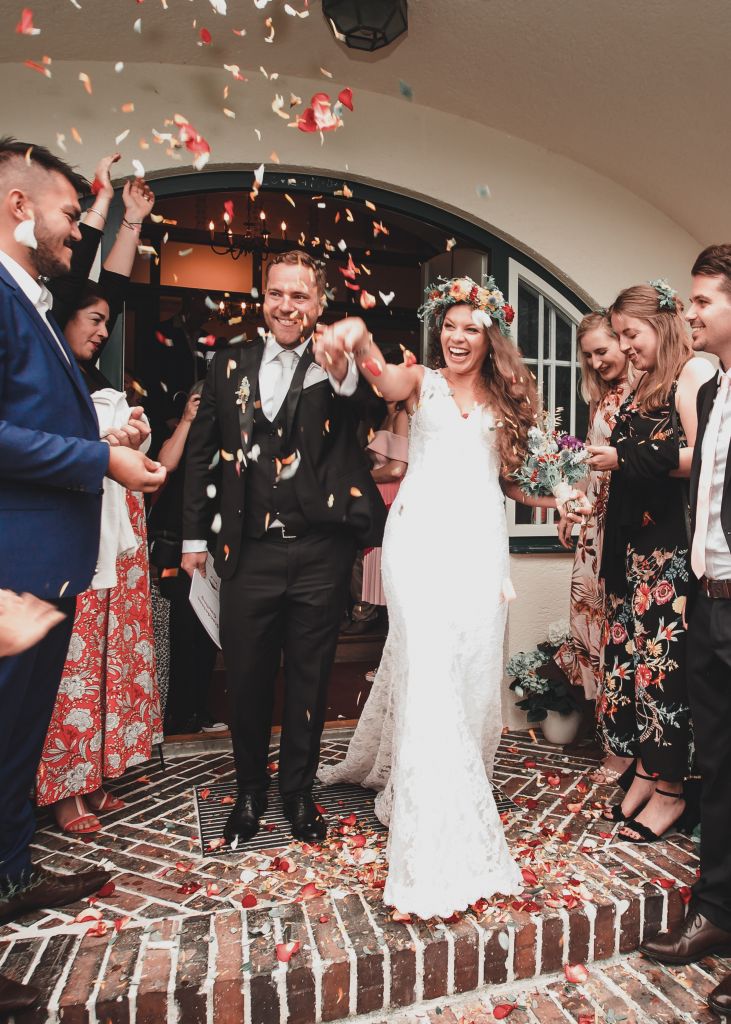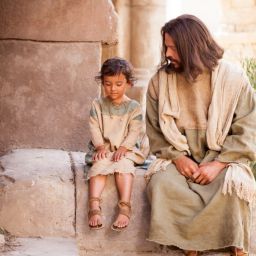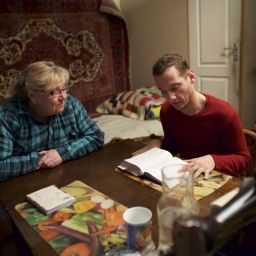Maybe it was your first time through the temple. Maybe you happened to come across an illicit recording of the endowment. Whatever the circumstance, it’s not unusual to feel a little (or a LOT) freaked out by the temple experience. At the very least, I doubt there is anybody who has gone to the temple for the first time who hasn’t come out thinking “Well, that was odd.”
In many ways the temple experience, when removed from its context, bends and breaks our expectations. With a complex root system that dives deep into 200 year old tradition, ancient scriptures, and millennia of symbolism, the temple can be jarring to our modern sensibilities.
A friend of mine, who goes by Senno_Ecto_Gammat on reddit, wrote a letter to family who were preparing for the temple to attempt to prepare them for what they would experience. His words and insights are incredibly useful, and I share a portion of them with his permission here.
Ritual Drama
There’s a real difference between watching a secretly-recorded video and participating in the ordinances. Kind of like how watching a secretly-recorded video by someone who snuck in and recorded marital intimacy between partners would feel dirty and wrong but actual marital intimacy is good and beautiful. That goodness and beauty doesn’t translate through undercover secret recordings, and people who had only seen secret recordings would not be anything like experts or qualified to speak on the meaning or value of marital intimacy. Rather, the people who were actual participants would be the experts.
So that’s similar here. I’m not trying to equate the two, but rather just to give another example of how there’s a legitimate case for proper understanding which isn’t met by secret recordings.
The ordinances in the temple are ritual drama about the creation, fall, and redemption of human kind. In addition, participants make progressive covenants to uphold certain standards in life, such as the law of Chastity and the gospel.
A ritual drama is a narrative played out in highly stylized ritual fashion with the elements of the ritual having primarily a symbolic meaning understood in the context of the ritual drama, but not necessarily outside of it. Human history is filled with such ritual drama. If you get in the habit of looking for it you will see it everywhere. A modern wedding ceremony is an example of a complex ritual drama centered on the past, present, and future destiny of the bride.
A Wedding as a Ritual Drama

The groom waits at the pulpit, the location symbolizing the present. The bride, in a symbolic journey from birth to the present, is escorted by her father from the back of the chapel, resting her arm in his and symbolically relying on him through childhood and adolescence. They pass the family of both bride and groom, supporting characters from the past, separated from each other by the aisle as they are wholly separate and will meet and know each other only through the couple being married. As she reaches the pulpit, the bride leaves her father and approaches the groom, who she takes hand in hand – joined physically in a representation of the ceremony they are participating in which will join them spiritually. Behind each is a cadre of close friends and family who are chosen because they are considered the closest, most supportive people to each member of the couple. They are dressed complimentary to their primary – the groomsmen bring out the best in the groom, and the bridesmaids bring out the best in the bride, in dress as well as in life.
The vows are exchanged, and the newlywed couple leaves the pulpit and the present, and walks away into the future, arm in arm, getting support from each other and leaving the ceremony behind.
In the reception they feed each other wedding cake, a manifestation of their vow of fealty to each other. They throw flowers behind them as an invitation to their unmarried friends to join them in marriage, and the bride dances with both her husband and father, a recognition of the most important men she has.
We are comfortable with this because we understand the symbols and their context. The wedding is a covenant-making ritual drama. The marriage covenant is presented, and then the participants make the covenant with a ritual dialogue – “I do” – and a ritual physical sign – the kiss. The awkwardness of the wording or discomfort of kissing in front of a hall filled with people is not even considered because we understand the ritual.
The ritual drama is not an accurate narrative.
The ritual drama of the wedding is the story of the bride’s life. But it would be absurd to think that the wedding ceremony itself is an accurate narrative of that life. The ritual form is meaningful only to the extent that it points toward the things it symbolizes. The form of the ritual drama can have almost no relationship to the actual concept and it should not be seen as an accurate representation of it.
In the endowment, the covenants are presented in ritual drama, and are made with ritual dialogue and ritual physical signs. A baptism is a similar, though much simpler, ritual drama and contains many of the same elements – participation in a narrative for the purpose of covenant making, and the covenant itself accompanied by ritual dialogue and symbolic physical signs – getting dunked in water!
It is important to recognize that the ritual is highly stylized. For example, In the endowment Peter, James, and John are portrayed as visiting Adam and Eve and giving gospel instruction. It should not be inferred from this that Peter, James, and John actually did this. What’s more, they are shown with physical bodies, something which is a logical impossibility. The purpose isn’t to give an accurate and objective description of a real event, but to further the ritual narrative.
We see and accept this when we enjoy live theater. The characters never seem to wonder why they are on a stage and why they are being watched by an audience. The drama is stylized.
Tokens

A token is a tangible stand-in for something else, often intangible. The token need not have anything to do with the thing it stands in for – the primary, and it need not be comparable in the value or importance of the primary. Covenants are often associated with tokens. In the example of the wedding above the ring is a token of the marriage covenant. On its own it is meaningless and worth relatively little, but as a reminder of the marriage covenant it takes on a new and more important role. Notice that the there’s no reason why it necessarily must be a ring – anything will do as the token. It is just an accident of history that we use rings for this purpose, but anything else would be equally useful and valid. The actual properties of the token matter very little. Only its relationship to the primary is important.
Remember the covenant God made with Noah following the flood:
And I will establish my covenant with you; neither shall all flesh be cut off any more by the waters of a flood; neither shall there any more be a flood to destroy the earth.
And God said, This is the token of the covenant which I make between me and you and every living creature that is with you, for perpetual generations:
I do set my bow in the cloud, and it shall be for a token of a covenant between me and the earth.
The rainbow is the token of the covenant. But rainbows were pre-existing entities simply pressed into service as a token of a particular covenant at a particular time. That’s typical – tokens are simply borrowed out of that which already exists but gain significance when they are used in relationship to the primary. In the endowment, the covenants are accompanied by tokens. Do not ascribe too much significance to the token, and do not make the mistake of thinking the token is the primary.
Brigham Young said of the endowment:
Your endowment is, to receive all those ordinances in the house of the Lord, which are necessary for you, after you have departed this life, to enable you to walk back to the presence of the Father, passing the angels who stand as sentinels, being enabled to give them the key words, the signs and tokens, pertaining to the holy Priesthood, and gain your eternal exaltation in spite of earth and hell.
He didn’t mean there would be angels looking for actual tokens. He meant there would be angles reviewing the covenants we had made and we would be able to pass them as covenant-keepers.
Ok, it’s me again. Isn’t that great advice?
The temple can be a place so unfamiliar to us that our first encounter can shock and disturb us just as much as it would confuse us to witness a baptism or a wedding or a coronation without any context. Imagine how an alien would feel if it arrived at earth just in time to see an actor playing Juliet stab herself with a fake dagger and fall to the ground, even though his sensors clearly indicate both she and this “Romeo” fellow are just fine and the dagger wasn’t even real. Is she trying to deceive the crowd of people in the seats all around her? Why are they crying? Now some of them are standing up and flapping their hands together. How odd.
This unfamiliarity and dissonance with what we’ve become used to can be deeply upsetting. In my ward, a gospel doctrine teacher shared how she was preparing for a mission and the temple. She bought a whole new set of scriptures and studied them looking for temple verses, even writing a little “t” next to the ones she felt related to the temple. She attended classes, had her mission call, and was otherwise all prepared.
Then, after having attended the temple for the first time, she left the building and turned to her father and said:
“I can’t go on a mission. I don’t know if I can stay in the church.”
It had not been a good experience for her.
Her father lovingly listened, didn’t judge, and stayed with her on her journey. She was determined to understand – not just understand the symbolism, but understand how what she had experienced could fit what she knew. As part of her determination, she went with her father back to the temple again and again, looking for understanding.
Several months went by, but something clicked. Her effort and determination brought the revelation she needed. She reactivated her mission call, served, and stayed with the church. More understanding followed in coming years and she is an amazing teacher who I admire greatly for her insight and understanding.
You will be ok. Keep moving forward. Keep looking for understanding. It may take months or years for clarity on some aspects of your experience, but you will become an expert able to explain much about the incredible importance and beauty of the temple experience. As you attend the temple, take special note of the many people all around you who are there simply to help and offer guidance. You are surrounded by friends who are ready to go with you through this experience and share their own knowledge and thoughts. Take advantage of that.
The temple can be a wonderful experience. Yes, it requires some effort on our part to understand and appreciate. Yes, it draws heavily from other sources to deliver its message to us. Yes, it teaches us the most valuable principles of the gospel. And, yes, we have to endure some weirdness in the process. It’s worth it.














